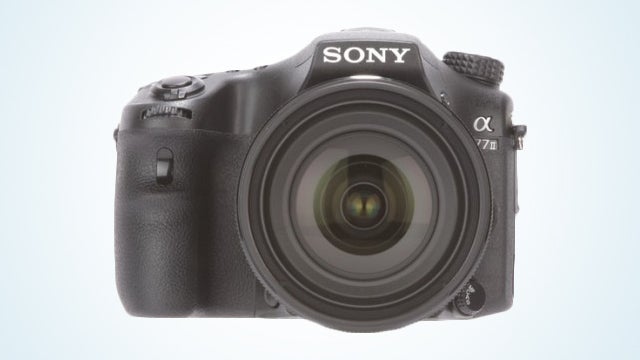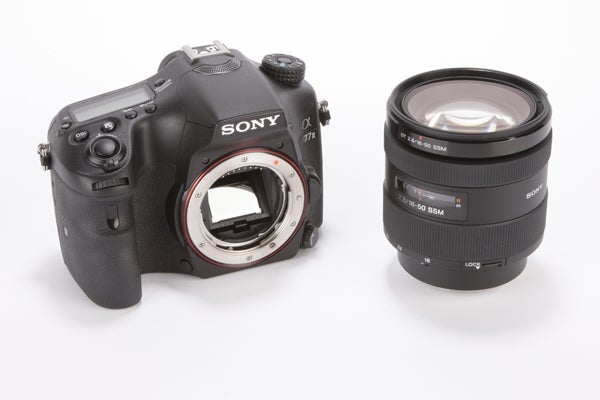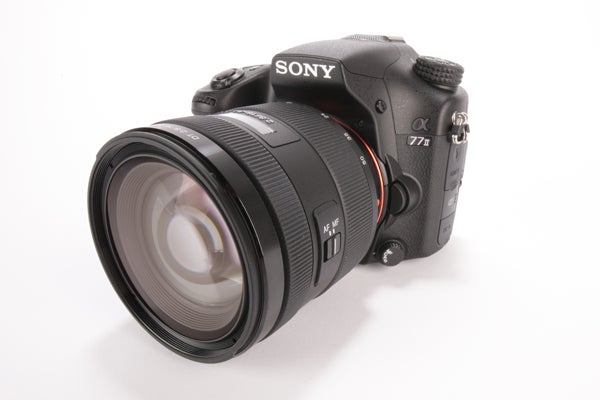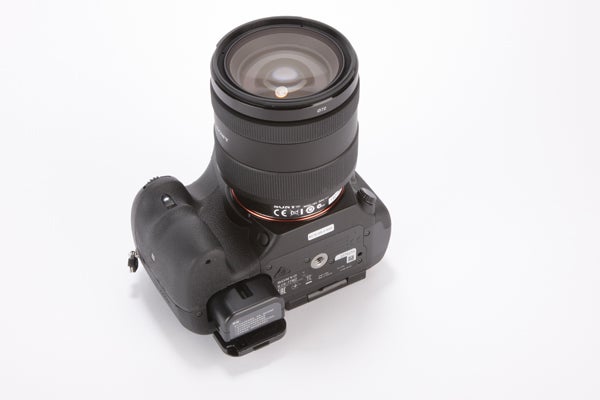Sony Alpha A77 II Review
Sony Alpha A77 II
The long-awaited A77 II iadds solid improvements all round, including superb AF

Sections
- Page 1 Sony Alpha A77 II Review
- Page 2 Design and Performance Review
- Page 3 Image Quality and Verdict Review
Verdict
Pros
- Fantastic AF with superior tracking
- Excellent LCD
- Solid build quality
- Excellent overall image quality
Cons
- Menus take some getting used to
- GPS tagging has been removed
- Some issues at high ISO
Key Specifications
- Review Price: £1000.00
- 24.3MP APS-C Exmor CMOS sensor
- 3-inch tiltable LCD
- A-mount, ISO 100-25,600 (extendable to 50)
- Full HD video in 24p and 60p
What is the Sony Alpha A77 II
No one can accuse the Sony Alpha 77 II of lacking ambition. It’s been described (by the people who made it) as ‘The King of APS-C’, a title that purports to put it above the Canon EOS 7D and the Nikon D7100. Lofty.
Given that we’ve spent the past two years with precisely zero new A-mount SLT cameras, one might have reasonably concluded that Sony was done with the A-mount.
With the Alpha 77 II however, the successor to 2011’s Alpha 77, that proves to not be the case. Making great strides on its predecessor, the Alpha 77 II boasts a new 24.3MP APS-C sensor, 79 AF points, 12fps burst shooting and built-in Wi-fi.
On paper it’s seriously impressive, so let’s see if it lives up to all that it promises.
SEE ALSO: Panasonic Lumix GH4
Sony Alpha A77 II: Features
Though the Sony A77 II’s APS-C-sized Exmor CMOS sensor is different from that of its predecessor, it boasts the same resolution of 24.3MP. Given that the sensor measures 23.5 by 15.6mm, the result is quite a high pixel density.
An improvement truly worth shouting about though is the autofocus. The Alpha 77 had a decent-for-the-time 19 AF points – the Alpha 77 II ups that to 79, with 15 cross-type points.
This is thanks to a new phase detection AF module with a centre-weighted algorithm. Sony has enhanced the intelligence of the AF algorithm to aid precision of tracking subjects with sensitivity that can be adjusted by the user in accordance with what the subject requires.
SEE ALSO: Fujifilm X-T1
If you’re at all interested in photographing anything that moves at pace – sports, wildlife, etc. – your interest should be piqued at this point.
The Bionz X processor that we’ve seen on plenty of recent Sony offerings has made it to the Alpha 77 II, and offers all the lovely features and functions its been bestowing upon the rest of Sony’s range. It allows the Alpha 77 II to shoot at a clip of 12fps, to a total of 64 Fine JPEGs before the buffer fills up.
It can also manage 25 consecutive JPEG Raw images. This is a pretty sharp improvement on the Alpha 77 – while the senior camera could also shoot at 12fps, its buffer would fill at 18 Fine JPEGs and just 12 JPEG Raws.
Elsewhere on the processor you’ve got improved JPEG sharpening, diffraction reduction and noise reduction technology. It’s an impressive package.
SEE ALSO: Best Cameras Round-up

Another thing the Alpha 77 II gains over the Alpha 77 is Wi-fi connectivity – though it sacrifices GPS-based image geotagging in the process.
Using Wi-fi or NFC connections it’s possible to hook the camera up to an Android/iOS device via the Sony PlayMemories app, allowing for creative techniques such as timelapse, sequence shots and colourising images.
Some may bemoan the aforementioned loss of GPS tagging, but it’s really not inconceivable that Sony could release a dedicated image geotagging app that works with the GPS of the smart device with which the camera is paired.

